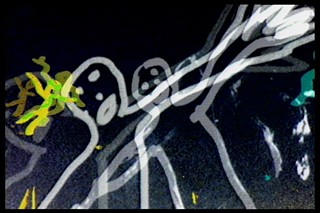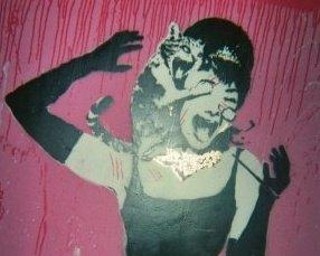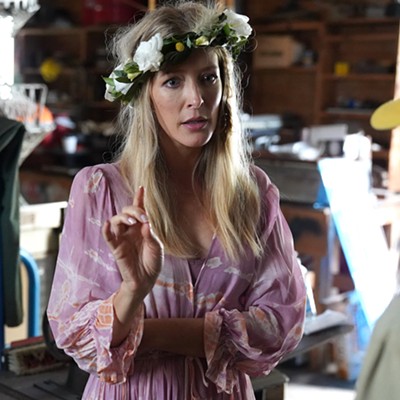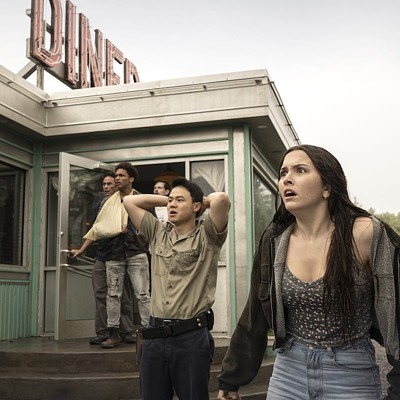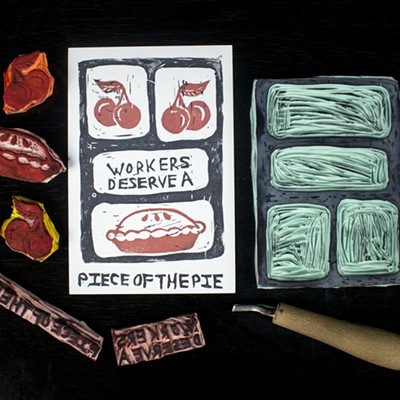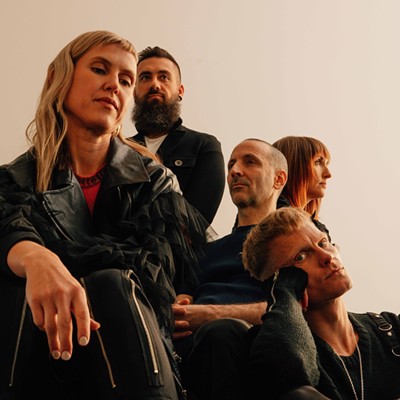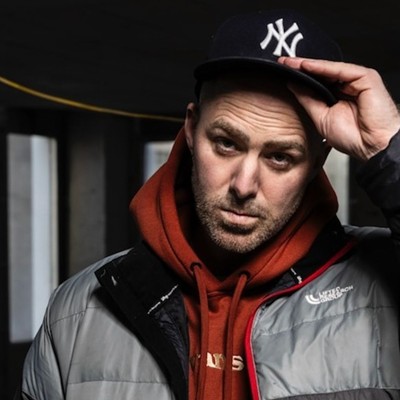The heads of disembodied stick figures float from one end of the screen to the next. Childlike drawings of planes and explosions ricochet across a swirling dark sky of scribbles and ghosts. The looped sounds of robotic screaming and rapid-machine-gun firing set the mood.
Quebecois filmmaker Pierre Hébert and electronic composer Bob Ostertag sit in a corner, controlling the action. Their tools of choice in orchestrating this nightmare: video game controllers, foot pedals, a computer mouse and a dry-erase marker.
"Doing what I do is really totally crazy if you compare it to the normal way of doing animation," says Hébert, interrupted from feeding the birds at his home in Quebec. Over the phone, he discusses Special Forces, the third part of Hébert and Ostertag's ongoing Living Cinema project. It premiered in Beirut in 2007 as part of the Irtijal Festival and comes to Halifax Friday night, thanks to the Centre for Art Tapes, who are presenting the evening.
Living Cinema explores the relationship between artists and technology. Hébert and Ostertag fear today's musicians and animators are becoming mouse-clickers only, enslaved to the technologies they depend on. But Ostertag has developed innovative software, making more interactive, spontaneous performances possible.
During performances, Hébert works frenziedly, drawing images onto glass with a marker, while modifying images frame by frame. A small camera records the images, then transposes them over the rolling film. Meanwhile, Ostertag manipulates samples taken from bizarre sources like crunching Cheetos, wind-up toys and video games.
This is not the first time Hébert has been at the cutting edge of cinema. In the '80s, he pioneered scratching directly onto rolling film. Though his technology has become more sophisticated over the years, Hébert has stuck with his simplistic, childlike style.
"His fluid movement into the digital realm of using new technologies and digital media in such a handmade, organic way was just so impressive to me," says NSCAD professor and filmmaker Solomon Nagler. After seeing Hebert and Ostertag collaborate in Montreal, Nagler worked to bring the duo to town for the Halifax Independent Film Festival.
The performances benefit from Hébert and Ostertag's artistic chemistry, which has been strong since the two friends started working together in 1989.
"We're like kids in a sandbox," says Hébert, referring to their playful, exploratory interactions with sound and images.
No two performances are ever the same, providing the artists with the flexibility to react to events as they unfold. Both are political: Hébert's a self-described "news addict," while Ostertag lived in El Salvador, supporting the guerilla movement.
The idea for Special Forces was conceived in a five-minute phone conversation between the two, moments after the 2006 Israeli invasion of Lebanon began. That summer, images of dead Lebanese children were broadcast from one screen to the next. The bombardment was a response to the kidnapping of two Israeli soldiers by Hezbollah militia, which claimed the lives of around 1,000 Lebanese, most of who were civilians. "It seemed like some kind of a threshold was being crossed, even in the very unstable and difficult situation of the Middle East," says Hébert, referring to the 34 days of violence.
That summer, Hébert and Ostertag had been working on a project about video games, doomed for the trash. The two decided to change course immediately, by using sounds from the games in combination with footage of war-torn Lebanon and Hébert's playful, spontaneous drawings. It sounds unlikely, disrespectful to the dead even, but it's a combination that works.
The video-game soundtrack makes the senseless nature of the killing apparent, highlighting the "contrast between the imaginary world of war and actual real war where people are dying," explains Hébert. Though the subject matter is generally heavy (other performances have dealt with the Iraq War and September 11), the work conveys the artists' spontaneous gut reactions to events, rather than dogmatism or political agendas.
"I like when people get to connect with the playful aspect of it," says Hébert, "but at the same time grasp the serious concerns."
Living Cinema, Friday, April 3 at the North Street Church, 5657 North, 8pm, $8 students/$10. Artist talk with Hébert and Ostertag, Friday at 1pm, NSCAD Film School.

